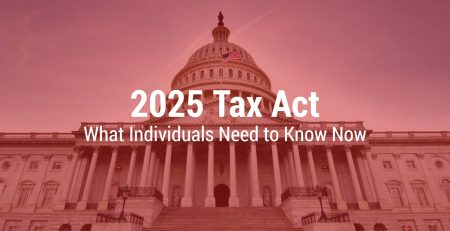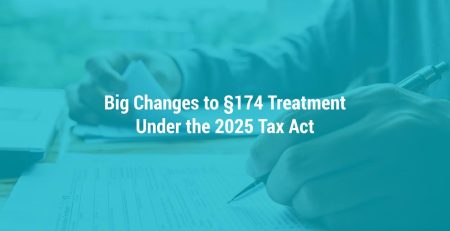Major Changes to Estate and Gift Tax Exemptions
The recently enacted 2025 Tax Act, often referred to as the One Big Beautiful Bill, brings significant and permanent changes to federal estate and gift tax exemptions. These updates present a unique opportunity for individuals and families to transfer wealth more efficiently and with less tax exposure. Here is what you need to know—and how you can plan ahead.
Key Changes Under the 2025 Tax Act
- Estate and Gift Tax Exemption Increased:
The basic exclusion amount for estate and gift taxes increased to $15 million per individual ($30 million for married, filing jointly), indexed for inflation starting in 2026. This is a substantial increase, allowing for greater tax-free transfers of wealth.
- Permanent Change:
The Tax Cuts and Jobs Act (TCJA) sunset provision that would have reverted the exemption to a lower amount is repealed, making the higher exemption permanent.
- Inflation Adjustment Updated:
The inflation adjustment base year is now 2026, rather than 2011, ensuring future increases are more current.
- Effective Date:
These changes apply to estates of decedents dying and gifts made after December 31, 2025.
Planning Opportunities: How to Take Advantage
- Make Large Lifetime Gifts:
Consider making substantial gifts before further legislative changes or potential rollbacks. Gifts made after December 31, 2025, can utilize the new $15 million exemption.
- Leverage Portability Where Appropriate:
Married couples can maximize their combined exemption by electing portability on a timely filed estate tax return, allowing the surviving spouse to use the deceased spouse’s unused exemption.
- Annual Exclusion Gifts:
Continue to make annual exclusion gifts ($19,000 per recipient in 2025) to remove assets and future appreciation from your taxable estate.
- Direct Payments for Education and Medical Expenses:
Make unlimited tax-free gifts by paying tuition or medical expenses directly to providers—these do not count against your annual or lifetime exemption.
The 2025 Tax Act’s increased exemptions offer a window of opportunity for high-net-worth individuals and families to transfer significant wealth tax-efficiently. Proactive planning—making large gifts, leveraging trusts, and reviewing your estate plan—can help you maximize these benefits and secure your legacy for future generations.
- Review and Update Estate Plans:
With the increased exemption, many individuals may no longer be subject to federal estate tax. Now is the time to review and update your estate plan to focus on income tax planning, asset protection, and multigenerational wealth transfer.
- Monitor state estate/inheritance tax regimes.
Some states decouple from federal changes. High-value individuals may still benefit from state-level planning (e.g., trusts, disclaimers, etc.).
Even though the law is now more stable, ongoing review is essential — a future Congress could still revise these provisions, and fundraising, wealth transfers, and market volatility may shift planning strategies.
Refresher: Federal Gift Tax Rules for 2025
- Annual Exclusion:
You can give up to $19,000 per recipient each year tax-free. Married couples can combine their exclusions for $38,000 per recipient.
- Lifetime Exemption:
The lifetime exemption is $13.99 million in 2025, rising to $15 million in 2026. Gifts above the annual exclusion reduce your lifetime exemption.
- Reporting Requirements:
Gifts above the annual exclusion must be reported on IRS Form 709, even if no tax is due because of the lifetime exemption.
- Special Exclusions:
Gifts to spouses, charities, or for direct payment of tuition or medical expenses are generally not subject to gift tax.
Take Action Now
The 2025 Tax Act’s increased exemptions offer a window of opportunity for high-net-worth individuals and families to transfer significant wealth tax-efficiently. Proactive planning—making large gifts, leveraging trusts, and reviewing your estate plan—can help you maximize these benefits and secure your legacy for future generations.
Hungerford is Here to Help.
Navigating these new tax changes can be complex—but the potential savings could be substantial. Reach out to Hungerford today to learn exactly how the 2026 changes will affect your situation and to develop a personalized tax strategy that maximizes your benefits.
Disclaimer: This blog post is for informational purposes only and does not substitute for personalized advice. Please consult your tax professional for guidance tailored to your situation.











